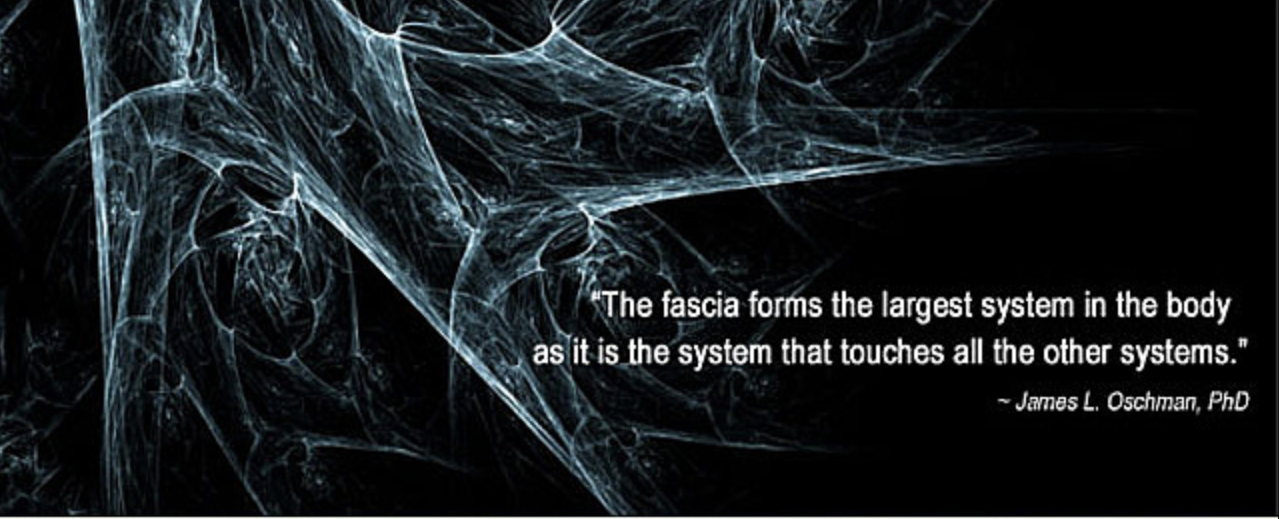|
Conventional wisdom purports our bodies will break down as we age. I’ve never really bought into that idea. I prefer to believe I can live dynamically until I simply drop dead of some natural cause.
I’m in the minority. People complain about “feeling old” as early as the age of 25 and it only amps up the older folks get. I’m not dense. I understand there is going to be some wear and tear — plus a few less desirable developments such as chin hair I’m forced to seek and destroy — but I don’t think it’s as dire as people make it out to be. First, I’ve known some energetic senior citizens and always admired their get up and go. Second, I’m a root cause kind of girl. If I have pain or suffering, I don’t accept “yeah, well, you’re old” as the reason for it as some people in my household are fond of saying. I research it. The past four or five years have included an exploration into mobility, which led me to studying fascia, in particular, this past year. What a game changer. Fascia (pronounced fash-ah) is connective tissue that runs throughout our entire bodies from head to toe, connected as a single unit, attached underneath the skin. A highly sophisticated system of cells, fascia interacts with various systems, separating and connecting muscles, organs, bones, veins and our arteries. You can easily visualize how damaged or distorted fascia could impede basic bodily functions or mechanics. My first time hearing about fascia was when I was diagnosed with plantar fasciitis a couple of decades ago. Little was explained about fascia and instead, my podiatrist fitted me with orthotics that eventually stopped working. It took years, but I fixed the issue. About five years ago, I was having unexplainable knee pain. It took about a year, but I finally found someone to diagnose the problem was actually in my outer thigh, where my IT band was located. I learned about foam rolling and the importance of tissue management “at my age.” I began exploring and implementing this strategy and enjoyed immediate results. No more knee pain! My IT bands, which had long been painful to the touch, felt much better. Little did I know all that pain was trying to tell me my fascia was a mess. A few months ago, I found myself dealing with recurring plantar fasciitis whenever I ran, walked or jumped rope along with significant pain in my legs, the right side in particular. Everything felt twisted and tight. I made an appointment with a professional friend nicknamed the “Tissue Jedi” and she explained just how messed up my fascia was. She likened it to a series of highways and roads and said there was a major traffic jam. The treatment was painful as she dug in with fingers and tools to try and get “traffic” flowing freely again. She also schooled me on tricks and tools to employ at home involving lacrosse balls and foam rollers plus exercises and understanding optimal exercise form. It helped tremendously if I was religious about the treatment but frequently returns when I work out. I purchased a device called the FasciaBlaster because pals had raved it eliminated their cellulite. Even though I felt like I’d been suckered into some bizarre as-seen-on-TV “contraption,” I was willing to try something radical to rid myself of the unsightly puckers and dents. It turns out cellulite is a fascia issue, along with most of the pain I keep experiencing, and this tool may be the answer to resolving all of it long term. It helped to read Ashley Black’s book, “The Cellulite Myth” as she is the inventor of the FasciaBlaster and a leading expert in the study of fasciology (spawned by her own personal tragedy). I am astonished by what she’s discovered about fascia problems and how her tool is righting these issues by loosening restrictions, adhesions and distortions; increasing blood flow and volume, improving nerve activity, and increasing muscle access, for starters. Her clients and followers have experienced surprising results, including pain reduction or elimination, smoother skin, fewer or no migraines, resolution of fibromyalgia, reduction of scars and scar tissue, reduction or elimination of stretch marks, fat loss and fat lysing, radical changes to shape or figure, better digestion, improved mental capacity and emotional well being, stimulated detoxification, improved organ function, flexibility, libido and sports performance, and much more. It only makes sense if a circuit board running throughout our entire body becomes kinked, tangled or impeded, it’s going to cause problems in myriad ways. Fascia doesn’t fix itself, so the effects will snowball, the body will compensate and you’ll feel the pain. It’s worth investigating. Maybe those aches and pains you associate with aging — aren’t. This column aired in The Journal on Sunday, April 9, 2017. UPDATE (10/18): I want to be clear I do NOT endorse the FasciaBlaster. At the time of this column, I was just beginning to experiment with it. I have found ongoing pain relief to be best remedied by regular foam rolling, strategic use of the lacrosse ball, hand-held muscle rollers and yoga.
1 Comment
|
Summary
A collection of columns, articles and general a-musings. Archives
July 2024
|
Katherine Cobb


